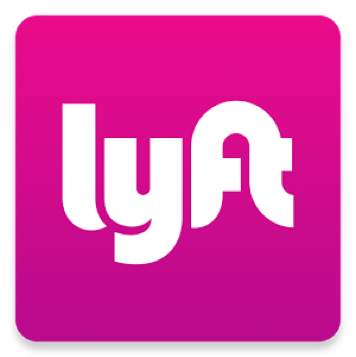Patient Centricity and Convenience? Request a Lyft
The recent partnership between Continuum Clinical and Lyft has introduced the convenience of transportation into the hands of patients. Nariman Nasser, VP of Site Optimization at Continuum Clinical, elaborates on this partnership.
The concept of patient centricity continues to evolve, as various stakeholders in the clinical trials industry implement an array of solutions in order to address patients’ needs. From a service provider point of view, patient centricity involves bringing more convenience to the patient. Continuum Clinical recently partnered with Lyft to deliver the convenience of transportation directly into the hands of patients. Nariman Nasser, VP of Site Optimization at Continuum Clinical, elaborates on the partnership in this interview. There will be discussion on incorporating digital technologies in clinical trials at PanAgora’s Mobile Pharma Summit.
Moe Alsumidaie: How did the engagement between Lyft and Continuum Clinical start?
Nariman Nasser

Nariman Nasser: Transportation has been a major barrier for patients in clinical trials and it was a place where we could provide strong value in the form of recruitment and retention opportunities with the patients. We reached out to Lyft to better understand their offering and whether it could help us to address the challenges associated with patient transportation in clinical trials. In that meeting, we found that Lyft had a healthcare department already in place and they were already working with hospitals, senior living operators, home care providers and others in the healthcare space nationally to provide non-emergency medical transportation. They were already engaged with many healthcare entities as well as medical centers to provide patient transportation and they really understood the base, not just from a business process perspective, but also from a patient perspective. Lyft’s values as a company really aligned well with ours in terms of culture and commitment to patient needs.
MA: Can you tell me about the feasibility process that you went through with Lyft in order to select them as a partner.NN: One of the primary factors that came into play was safety: both safety of the patients that would be riding with them and protection of the ride itself in terms of liability for sponsors. As part of its business model, Lyft provides $1 million in liability coverage for the drive, which starts from the moment they agree to pick up the rider, not after the ride starts, which is an added value benefit for patients and sponsors from an insurance perspective. In addition to that, they perform a SterlingBackcheck background check on all of their drivers, which is the same background check the government uses for their employees. The background check continues on every driver with a standard periodicity to ensure the utmost safety for Lyft’s passengers. The third piece was their commitment to making the process as easy as possible, not just for us and sponsors but especially for the patients. The interface they use for their healthcare service never creates an out-of-pocket expense for the patient, and creates no additional burden for the site. The patient would be provided a unique code upon consenting to use Lyft from the study coordinator and that is where their involvement ends. Once the patient receives their code, they have two options: one, they can use the Lyft app directly on their smartphone, or two, request a ride through the Lyft Concierge platform. We were able to integrate Concierge with our call center for patient recruitment and our call center is able to manage all of those rides. This combined platform allows us to provide patients who don’t want to use the Lyft app with an option to dial into our toll-free call center to arrange the ride, and receive ride status updates. The ride logs are incredibly detailed, showing the time of the call, pick up and drop off locations and the cost of the ride. This data can be beneficial to help study teams better understand patient needs and optimize study visit design.
MA: What clinical trial impediments are you trying to solve by using Lyft?

NN: The specific issues we are trying to solve with Lyft are increasing patient enrollment and retention rates. We recently did a survey of sites that are involved with various trials to better understand patient transportation needs, and we are finding, just as the literature suggests, that transportation is a barrier to both enrollment and retention. From the enrollment perspective, the survey demonstrates that patients would have not enrolled in the study if a transportation option was not available to them. On the retention front, while patients may sign up for a trial initially thinking that they have their transportation worked out, they also tend to face other unexpected outcomes over time, impacting their transportation, and results in dropout. For instance, it is not uncommon for a patient to sign up for a trial initially knowing that they can drive themselves, but, sometimes if their disease progresses and they are not feeling well, they may not be able to drive themselves. That is an expectation that patients oftentimes did not plan for. The other instance is that patients rely on a caregiver, a family member or friend. Those people have their individual lives and sometimes that can interfere with transportation of study patients. In addition to retention, we are also addressing the problem of missed and rescheduled visits that can wreak havoc at the sites.
MA: Are there any specific disease indications that Lyft is better suited for than others?NN: There is certainly a higher need in areas where there are chronic conditions that decrease mobility or the ability to drive (i.e., Alzheimer’s. multiple sclerosis, lupus, etc.). Oncology is another indication where patients are just more ill and are uncomfortable driving. Any disease with visual impairments is also an area of need. For example, if someone has a wheelchair, or is visually impaired, the Lyft driver will assist them with getting into and out of the car as long as they are ambulatory. While there are physical impediments, there are also other factors that impact transportation, such as diversity of the population, timing of their appointments, socioeconomics, convenience, location and even traffic and parking in urban areas. There can be other obstacles that affect transportation choices; for example, we are working on a women's health project where the women are required to bring in a very large number of samples to their study visits. Carrying a large number of samples on public transportation is not feasible for those patients and may be a deterrent for them to join this study. In this case, Lyft is able to transport both patients and their study samples.
Moe Alsumidaie, MBA, MSF is Chief Data Scientist at Annex Clinical, and Editorial Advisory Board member for and regular contributor to Applied Clinical Trials.